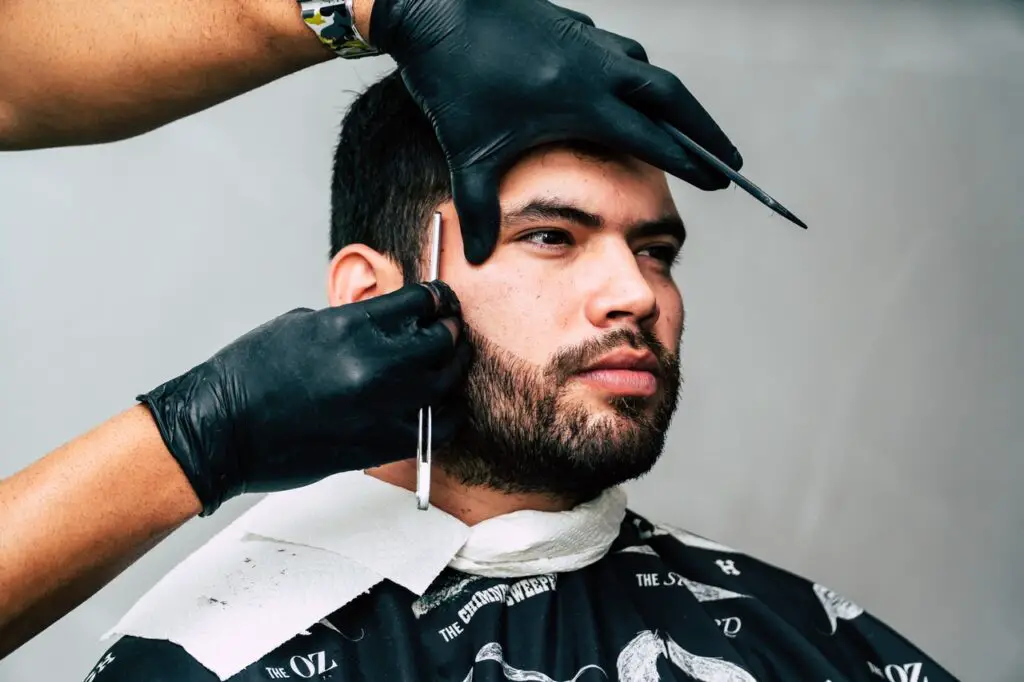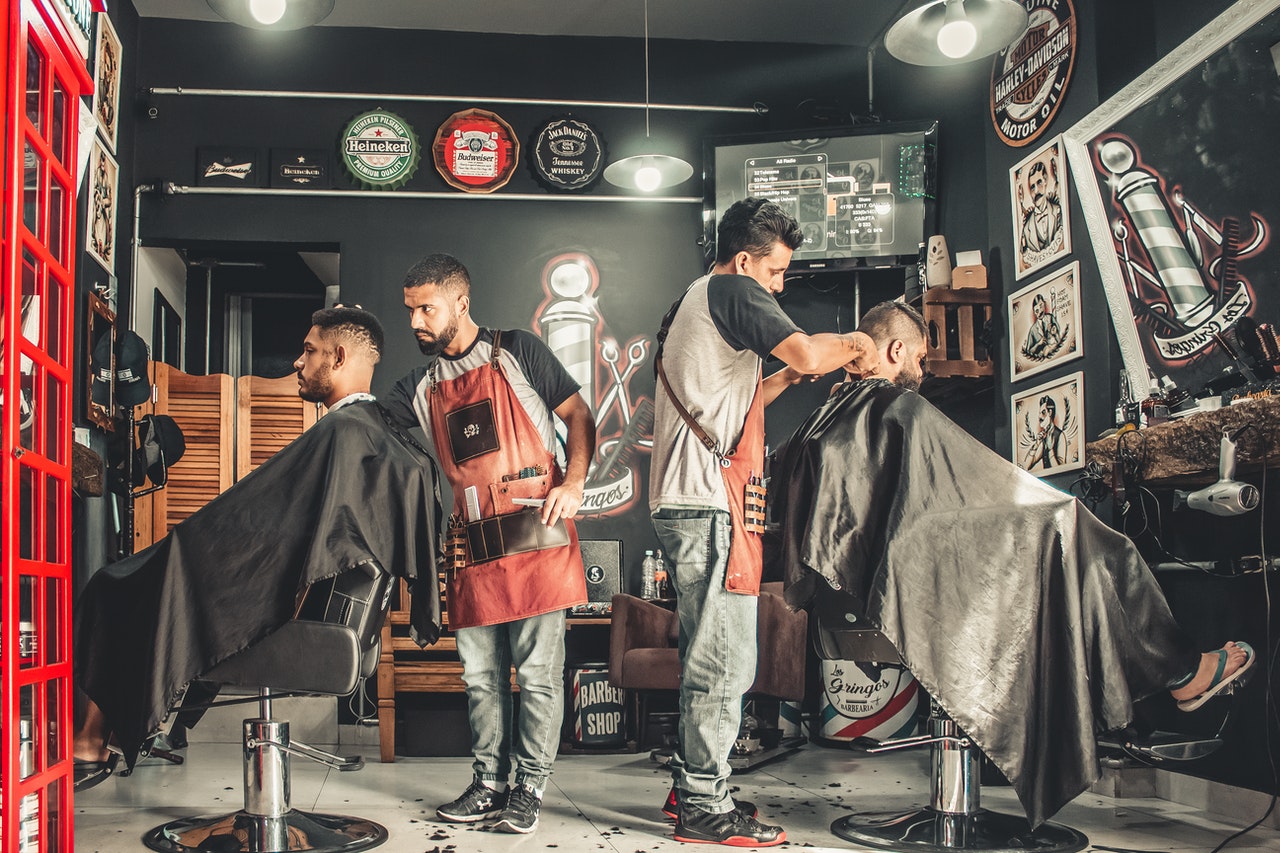Kinyozi is a Kenyan local term for a barbershop. With thousands of Kenyans visiting a Kinyozi daily, there is an adequate market to start a successful Kinyozi business in Kenya.
Currently, there are thousands of Kinyozi businesses in the country together with related supply chain businesses. However, not everyone who starts this business succeeds.
This is because it requires experience, skills, and capital to run a Kinyozi Business in Kenya. Just like all ventures, there are dos and don’ts while running a Kinyozi as below;
Kinyozi Business Advantages
- Ready market
Due to the nature of the business, there is a ready market in need of Kinyozi services across the country. This makes it easier to get customers without having to struggle with marketing and branding.
The majority of Kenyans visit a barbershop at least monthly. With this, comes the demand. These services also cut across both genders and are not limited to age groups as both the young and old use them equally.
However, the majority of the customers are men.
- Low Startup Capital
It is possible to start a Kinyozi business in Kenya with little capital in comparison to other businesses that are capital intensive. As an example, you can have your business running with as little as 100,000 shillings.
However, there is no maximum to the startup capital as it depends on the shop. The high-end Kinyozi could take up millions to start.
This low capital threshold makes it possible for starters with limited resources to get into the business. It also minimizes losses if the business fails to break even.
Below are some of the costs to factor in if you want to start a Kinyozi business in Kenya.
- Payment for relevant licenses and Permits
- Purchase of Equipment and Machines
- Rent Payment
- Cost of Power
- Doesn’t require complex skills
To start and operate a kinyozi in Kenya, you will need some basic barber skills. These you can gain through enrolling for the technical training in beauty schools. However, you can also do the on-job training by learning from an experienced barber.
There are also millions of tutorials online that you can use. One of the key platforms offering them is YouTube.
Challenges of Starting and Running a Kinyozi
- Poor Customer Service skills
Kinyozi is a service business hence challenges if there is poor service to the customer. Customers are very sentimental about grooming. Without the right skills, it becomes hard to succeed in this business as customers will keep off.
- Competition
The ease of starting the business has attracted thousands of people to get in. This creates cut-throat competition making it hard to make a sustainable income. The only to win is to ensure you have the right skills and customer service is top level.
Most Kinyozi are also investing heavily in the business to attain customer comfort and entertainment. In the end, this makes the business more expensive to start and maintain.
Steps of Starting a Kinyozi Business in Kenya

Acquire basic barbing skills
Barbing skills are very crucial in operating a kinyozi since this is the service that you will be selling to your customers. These skills are affordable and require little time to acquire. Watching YouTube videos is one of the ways to improve your barbing skills for free.
Should you feel that a classroom setup is the best way to acquire your skills, go ahead and pay for a short course at the nearest technical institute. You will be done with the course within a maximum of 3 months.
However, perfection will be achieved through on-job training.
Perform market adequate research
Market research is a key step when planning to venture into business. It helps identify potential market gaps and opportunities in the market.
It also assists understand what the competitors are doing in terms of operation and profitability. This knowledge enables planning and managing expectations. Getting this stage right is key to the success of the business.
One of the ways to do research is by visiting the existing business and engaging with people already doing the business. You can also read information and research that is available online.
Get a Good Business Location
A business location can either make or break your business. Getting a good location ensures customers can access the business easily.
As you choose your kinyozi location premises, consider your budget. The rent for different premises differs by location. Premises in urban areas typically go for a monthly rent of 10,000- 15,000 shillings, while similar premises in rural areas average 2,000 –5,000 shillings.
The charges for the location usually affect the price of the barber services. You will find that a haircut in a prime location such as Nairobi can cost more than 1,000 shillings while it’s lower in the rural areas
Once you consider your budget, it is time to look for premises in a strategic location. Your kinyozi needs to be easily accessible by customers and in an area with a high number of customers such as towns, shopping centers, or along the main roads.
Get relevant certificates and licenses
There are certain licenses and permits that you require before starting operations. These are mandatory and operating without them makes your business illegal.
Some of the relevant permits include;
- Single business permit by the county government- The cost of this license varies from county to county and also depends on the size of your business. For a small Kinyozi, it averages 3,000 shillings annually.
- Music Copyright of Kenya License (MCSK) – This license is issued if you plan to play music in your Kinyozi and costs 2,000 annually.
Setting up the Kinyozi
Once you have the relevant permits for the business, the next step involves preparing the premises to start receiving customers.
This involves setting up the premises as per your plan and budget. Some of the key items to factor in this process include barber seats, cabinets, and entertainment equipment such as a TV.
There are also key tools necessary for the business such as shaving machines, mirrors, and washing towels.
Once your shop is well furnished, it is time to purchase kinyozi equipment.
Below is the average pricing for the standard Kinyozi equipment.
- Barber chair- This type of chair is specifically customized for a kinyozi setting. Depending on your budget, you can choose to start with either 1 or 2 seats. It costs an average of 5,000 shillings. However, the price varies depending on the quality.
- Combs- These are important tools that could average 1,000 shillings.
- Hair clippers/ shaving machine- These are mandatory and the most used tools in a Kinyozi. A good quality shaving machine averages 5,000 shillings.
- Hair scissors- 500 Shillings
- Towels, aprons, and customer gown- 1,500 shillings
- Water heating equipment such as a heating jug- 2,000 shillings
- Equipment sterilizer – 5,000 shillings
- Aftershave lotion and related hair products- 1,500 shillings
- Washing Basins –500 shillings
- Entertainment equipment-10,000 shillings
- Hairstyle marketing charts- 1,000 shillings
If you do not have the money to fund all the above purchases, start purchasing the basics. You can finish stocking up once the business peaks up.
Pricing
Pricing is a key element when starting off a business. This is not a random decision but is guided by various elements such as
- Type of Customers
- Services Offered
- Competitors pricing
- Cost of Operation
A key example of pricing is running a Kinyozi in Nairobi would cost more in terms of rent and permits than doing the same business in a rural area.
- Starting Operations
Once you check off all the above steps from your checklist, it is time to start operating. At this point, you should be ready to receive customers and offer service.
Peak hours for a kinyozi business are during weekends, evenings (after-work hours), public holidays, and during back to school season.
With the rise of mobile money transfers in Kenya, consider setting up a till number or pay bill number for your business. It will make it convenient for your customers to transact.
- Marketing your business
Marketing is a key element in creating awareness for the potential customers of the business. Some of the key tools to market the business are social media and the use of word of mouth.
For a kinyozi in rural areas, word of mouth should be enough strategy to market your kinyozi.
Getting new customers is not adequate. You should also focus on customer retention by offering good service. In the long run as awareness increases, the business will have adequate customers to sustain it.
How Profitable is a Kinyozi Business in Kenya?
The profit margin for a kinyozi depends on the location and services offered in your kinyozi. However, there is an average potential to make a 30% net profit margin on initial invested capital per month.
With time, you can increase the size of your kinyozi and even hire staff. This will also come with the growth of profits as you can serve more customers.
Conclusion
To succeed in the Kinyozi business, you need to put in time and work. Growing a sufficient customer base takes time and is rewarding over time.
You should also focus on customer satisfaction as a way to retain customers. Naturally, customers are sentimental with their grooming and don’t like regular changes. With customer satisfaction, the number of referrals will also grow over time.
To recap, the steps involved in starting a successful Kinyozi business in Kenya are:
- Acquire basic barbing skills
- Perform market research
- Get an ideal location
- Acquire relevant permits and licenses
- Furnish your Kinyozi and purchase the necessary machines.
- Set appropriate prices
- Launch your Kinyozi
- Market your business
With this information, I believe you can successfully launch your first kinyozi business in Kenya.
![]()

[…] How to Start a Successful Kinyozi Business in Kenya […]
[…] How to Start a Successful Kinyozi Business in Kenya […]
[…] Breakeven in business takes time. It could take up to one year to establish a list of loyal and frequent customers before the business becomes profitable consistently. https://kenyainvest.co.ke/2022/02/20/kinyozi-business-in-kenya/ […]
[…] How to Start a Successful Kinyozi Business in Kenya […]
yes
[…] How to Start and Run a Kinyozi Business Successfully […]
[…] How to Start and Run a Kinyozi Business in Kenya […]